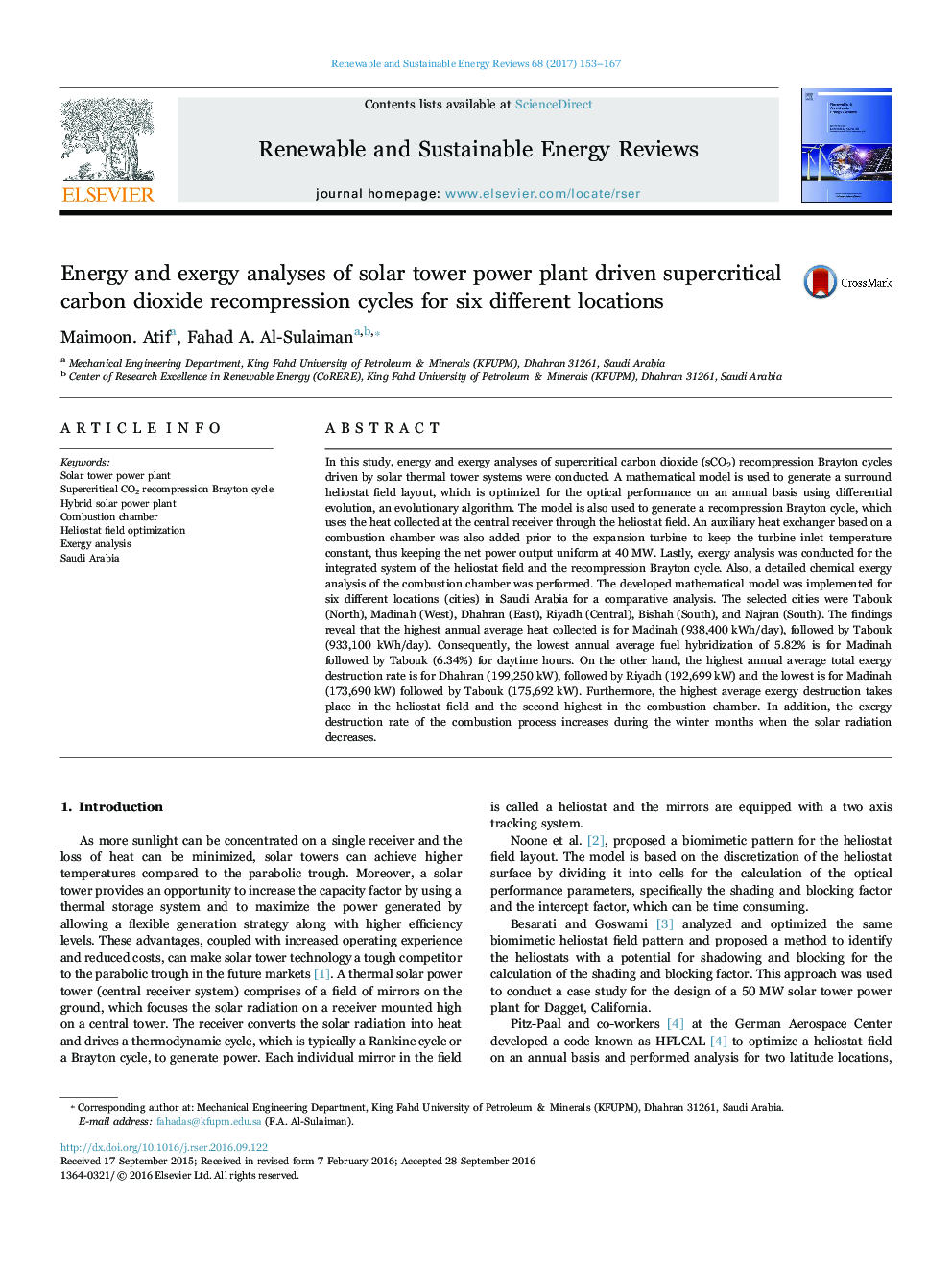| کد مقاله | کد نشریه | سال انتشار | مقاله انگلیسی | نسخه تمام متن |
|---|---|---|---|---|
| 5482663 | 1399355 | 2017 | 15 صفحه PDF | دانلود رایگان |
عنوان انگلیسی مقاله ISI
Energy and exergy analyses of solar tower power plant driven supercritical carbon dioxide recompression cycles for six different locations
ترجمه فارسی عنوان
تجزیه و تحلیل انرژی و اکسرژی از نیروگاه های خورشیدی برج های سیکل دی اکسید کربن فوق بحرانی را برای شش مکان مختلف
دانلود مقاله + سفارش ترجمه
دانلود مقاله ISI انگلیسی
رایگان برای ایرانیان
کلمات کلیدی
موضوعات مرتبط
مهندسی و علوم پایه
مهندسی انرژی
انرژی های تجدید پذیر، توسعه پایدار و محیط زیست
چکیده انگلیسی
In this study, energy and exergy analyses of supercritical carbon dioxide (sCO2) recompression Brayton cycles driven by solar thermal tower systems were conducted. A mathematical model is used to generate a surround heliostat field layout, which is optimized for the optical performance on an annual basis using differential evolution, an evolutionary algorithm. The model is also used to generate a recompression Brayton cycle, which uses the heat collected at the central receiver through the heliostat field. An auxiliary heat exchanger based on a combustion chamber was also added prior to the expansion turbine to keep the turbine inlet temperature constant, thus keeping the net power output uniform at 40Â MW. Lastly, exergy analysis was conducted for the integrated system of the heliostat field and the recompression Brayton cycle. Also, a detailed chemical exergy analysis of the combustion chamber was performed. The developed mathematical model was implemented for six different locations (cities) in Saudi Arabia for a comparative analysis. The selected cities were Tabouk (North), Madinah (West), Dhahran (East), Riyadh (Central), Bishah (South), and Najran (South). The findings reveal that the highest annual average heat collected is for Madinah (938,400 kWh/day), followed by Tabouk (933,100 kWh/day). Consequently, the lowest annual average fuel hybridization of 5.82% is for Madinah followed by Tabouk (6.34%) for daytime hours. On the other hand, the highest annual average total exergy destruction rate is for Dhahran (199,250Â kW), followed by Riyadh (192,699Â kW) and the lowest is for Madinah (173,690Â kW) followed by Tabouk (175,692Â kW). Furthermore, the highest average exergy destruction takes place in the heliostat field and the second highest in the combustion chamber. In addition, the exergy destruction rate of the combustion process increases during the winter months when the solar radiation decreases.
ناشر
Database: Elsevier - ScienceDirect (ساینس دایرکت)
Journal: Renewable and Sustainable Energy Reviews - Volume 68, Part 1, February 2017, Pages 153-167
Journal: Renewable and Sustainable Energy Reviews - Volume 68, Part 1, February 2017, Pages 153-167
نویسندگان
Maimoon. Atif, Fahad A. Al-Sulaiman,
